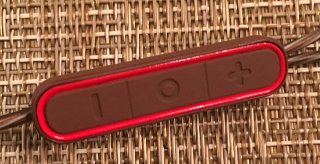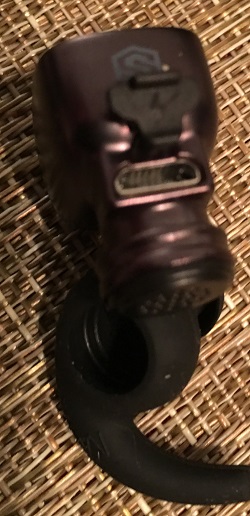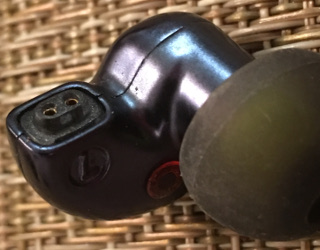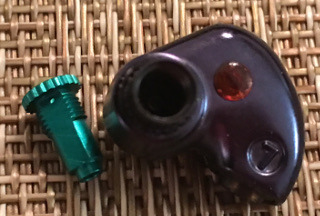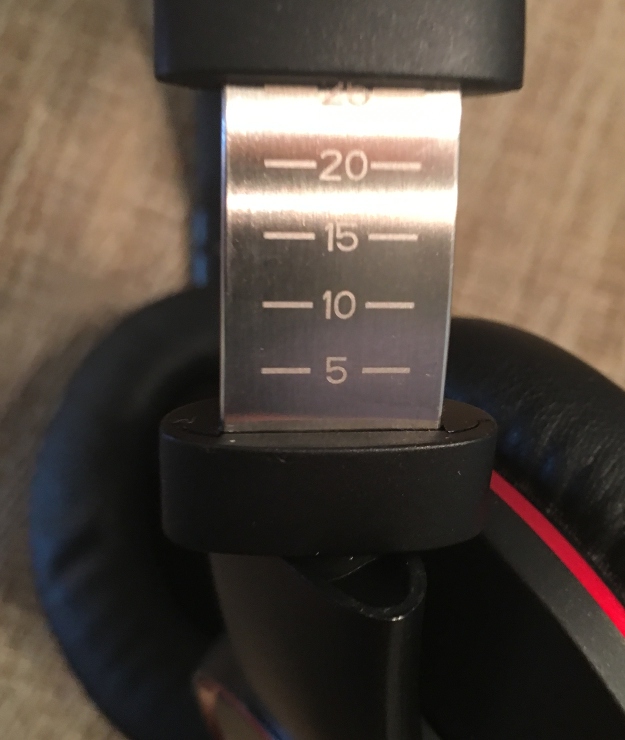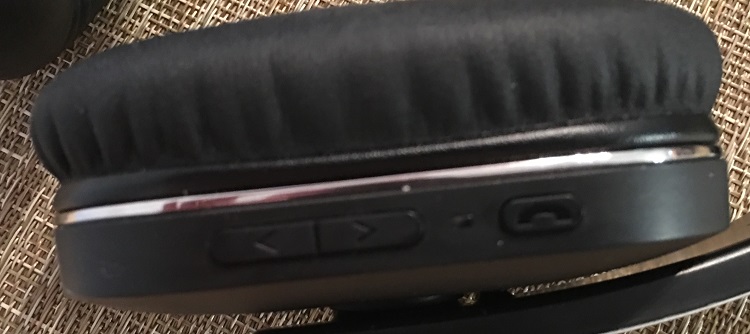
Introduction
Fiio and I have grown up together. Some of my first audio gear had the Fiio name on the side of it. An E17 with an E09 graced my office desk for quite some time a few years ago. As Fiio has matured, so have their products. Their DAPs are now the standard by which any sub $500 DAP is measured if you look at all the comparisons they draw in reviews. Not too long ago, I was asked to review a first for Fiio, an earbud. They had added the rest of the equation to their product line as they had long had amplifiers, digital to analog converters, and digital audio players, it was time to add earphones. That initial earbud was a great listen and was a hint at things to come. First, they paired with Dunu to release the EX1, their version of the Titan. I skipped that one, as I already owned a Titan and did not see a need for another. Then came a brand new line the F series. The F1,3,and 5 are all dynamic driver based and as you go up in sequence the resolving power of the drivers also move up. I purchased the F5, which was an improved EX with a titanium diaphragm and improved extension on both ends. They did a good job of showing what Fiio had learned from the earlier generations. Next was their BA/Dynamic hybrid the F9. After having liked the F5, I wasted little time in placing an order for the F9 only to be a bit disappointed. While the F9 had good clarity, more than expected levels of detail and good extension, it also had a major problem. A treble spike in the middle of the lower treble range absolutely ruined an otherwise good experience. Therefore, the F9 sits in the drawer while I moved on to the Brainwavz b400. Then Fiio announced the F9 SE – which was a fixed cable budget version of the F9 with no other changes. Then I was reading one day and a Fiio representative had posted on the upcoming release of the F9Pro, which got my attention, as the change was the in-house BA was replaced with the Knowles TWFK-30017 BA. My immediate thought was “Will this fix the spike?” Luckily, for me, Fiio sent me a sample of the F9Pro as part of their review tour. Did they succeed – read on?
Accessories
The F9 Pro comes with a very complete kit. Starting with a premium feel to the packaging. The box has an outer cardboard box with typical western style product details and advertising.
Inside the outer box is a black pressboard case with an understated Fiio Logo. Opening the box reveals well-fitted compartments for the earpieces at the top and a pelican style hard case below it.
Tips are hiding under the earpieces and quite a selection is provided (three different sizes of four different styles of tips) (More on this below). Inside the Hard case is a soft case made of something close to sweatshirt material, and two cables. The hard case is well padded and is similar to the Dunu provided pelican cases, which may hint that a partnership between Dunu and Fiio is still lurking in the background.
While well designed to provide protection from water and abuse, the hard case is too large for pocket carry so the soft case is a much-appreciated addition to the accessory package.
A 3.5mm terminated single ended cable with a microphone and remote and a 2.5mm terminated balanced cable devoid of the mic/remote are provided and hiding under the tips. (Personal bias is for cables without remotes so I used that most of the time unless testing the mic/remote.)
Tips deserve their own conversation here as the tips provided are designed to do different things. Fiio provides a set of memory foam tips that have the typical effect of dampening treble a bit and providing great isolation. In addition to the foams, three styles of silicone tips are provided. One style provides a neutral signature while the other two enhance either bass or treble. All my testing has been done with either neutral or foams (I did not use the provided foams since this was a review tour).
Build
The F9 series all share the same 2 piece metal shell. It is well made with seams being very consistent and no major gaps or glue showing. All of the F9 variants with removable cables use an mmcx connector for cable attachment on the upper side of the housing. This does limit the design to over-ear cable wear with the provided cables due to the built in guides. After-market mmcx cables without a memory wire can allow cable down wear but the fit is sub-optimal, as the weight of the cable tends to pull on the upper side of the shell and cause problems with seal and isolation. There are two vents on the inside of the shell (one immediately behind the nozzle and one immediately beneath the mmcx base). These do somewhat limit isolation but wear in a noisy office or public transport is still very viable.

The mmcx connector is at a slightly greater angle than the F9 so cables with larger connectors (Veclan) now fit well. (On the original F9, you had to shave some connectors to get a proper fit). Red and blue markings exist on the body of the mmcx connectors with matching coloration on the tip of the cables for easy reference.
Cables themselves are well made with solid rubber housing around the mmcx with a colored ring to show left/right orientation. Plastic memory guides provide the strain relief, which is a much better arrangement than memory wires in my opinion. Gentle heat with a hair-dryer will allow for reshaping should it be desired. Cables themselves are supple and minimize microphonics well. There is no chin slider, which I’m sure will be a detractor to some, but I found it unnecessary as fit, was good without it and no issues with movement presented during use. The splitter is metal and colored to match the earpieces with the word pro in white lettering.
A strain relief is added at the lower side of the splitter. The cables terminate in a 90 Degree 2.5 or a 3.5mm jack.
The 2.5mm cable is braided all the way throughout while the 3.5 is cloth wrapped. Both cables have cable management ties made of soft rubber just above the jack. This is a welcome addition and I found the soft rubber was easy to ignore if not in use. For those that dislike them a quick and careful cut with a razor knife should have them gone in a matter of a moment.
The Mic/remote on the 3.5mm cable matches the color of the earpieces as well and is straightforward and simple to use. It is worth noting that the microphone is susceptible to movement noise due to its position on the backside of the remote where it will be directed toward your clothing during normal wear. A shirt clip would be advisable if you intend to use the phone while at the gym or other strenuous exercise to minimize this.
The color of the F9 pro is much closer to that of The X5iii and the A5 I recently reviewed so if that is something that concerns you, you can rejoice. The original F9 was a distinct mismatch in this department but was never a concern for me.
I found the fit of the F9 pro to be very similar to the original F9 with a slightly greater forward rake to the nozzle than the original. Isolation was good but very tip dependent, as they are not a super deep fit.
Sound
Let us go ahead and get it out of the way. Did they fix the spike? The answer is maybe. The spike has moved up the scale from the 7 kHz region of the original F9. My guess would put it at high 8 kHz / low 9 kHz range based on what EQ settings remove it. The great news is, it is much less obtrusive than the previous version to my ear and probably many others. The bad news is technically, there is still a spike and it still contributes to the overall sound signature. Having said that, I am very pleased with the improvements the Knowles drivers made to the F9 Pro and I think it is big improvement in the treble overall.
For me, I like a headphone/earphone to have a good sub-bass presence, moderate mid-bass with as little bleed into the mids as possible, slightly forward upper mids with good vocals, and enough air and sparkle to get my attention. I tend to lean toward bright signatures as long as sub-bass is present.
The F9 Pro nearly matches my preferred signature. It is nearly linear with a mild U shape with plenty of sparkle without being belligerent. Bass is enhanced beyond neutral, but not emphasized to the degree commonly seen in V shaped signatures. Mids are clear with lower mids being very slightly recessed but upper mids pushed slightly forward almost exactly in the presence region so vocals are well rendered and natural sounding.
Bass
I expected the F9 Pro to share the same bass as the F9. Let me say immediately, it does not. This may be a case of addition by subtraction as the change in the treble elements may have revealed more of the bass, but the Pro has a more pronounced sub-bass and lower bass without being bloated in the mid-bass region. The F9 Pro’s bass seems to have greater extension and retains the good punch and slam of its progenitor. The mid-bass is very slightly forward but bleed into the mids is minimal. My advice would be to avoid the bass enhancing tips as they only serve to bloat an otherwise very good bass.
Mids
The lower mids are slightly recessed or maybe it is because the upper-mids are slightly forward the lower range seems recessed. Female vocals benefit greatly from the slight push to the upper mids while Male vocals sound full and natural. I was particularly impressed with the rendering of Van Morrison’s vocals (One of my heroes). Guitars have a nice full-bodied tone without being bloated and while retaining great definition and detail. Although, not a warm signature, the mids do have some elements that produce a smooth, organic tone more typically found in warmer signatures.
Treble
I was not a fan of the original F9’s treble. Unfortunately for me, the spike at 7 kHz was in a range that absolutely fatigued my ears and ruined the experience in short order. I understand that others were not bothered by this and my wife was amongst them. She uses my F9 infinitely more than I do these days as a result. I borrowed them back long enough to compare and make sure my memory was correct. What I found was the Pro has a more domesticated treble with better table manners. The lower treble is more linear when compared to the F9 with a mild boost in the mid treble that leads to a bit of extra energy for cymbals. The tuning is enough better on the Pro that more detail is presented (probably addition by subtraction again) when compared with the F9 and extension is slightly better with a bit more air and sparkle.
Imaging and Soundstage
I found imaging on the F9 Pro to be quite good as directional cues are well presented and the pro does a good job of layering without losing those directional cues in busier passages. Soundstage is wider than it is deep and is above average for its class.
Amplification
The F9 Pro works well from my HTC M9 or I-phone 7 without an external amplifier, but I did find it scaled well and was particularly enjoyable using the Cayin N3 and a resistor modded Walnut F1 (18K Ohm in parallel with Muses op-amp to lower gain). I think the F9 Pro also is easier to pair than the original F9 due to a slightly warmer tone.
Comparisons
Fiio F9: The obvious aside (ergonomics etc. being equal), the biggest difference in the PRO is the sound signature. The Treble spike that intruded into listening is gone on the Pro and the whole signature opens up as a result. Sub-bass is more present, mids are a bit more forward, and vocals are natural and well rendered. The strident and sometimes sibilant nature of the F9 is resolved in the F9 Pro and makes the listening experience much more enjoyable.
B400: The brainwavz has been a daily driver for me, so the question is, can the F9 Pro unseat it? From a fit and finish prospective, the F9 Pro gets the nod, as its metal shell and finish are about as comfortable as the b400, but the peeling paint on the seams of the 400 are a reminder that the construction methods differ quite a bit. From a sound perspective, the two are very hard to compare as the b400 is near reference flat and the F9 Pro is much more U shaped. The b400 shows a bit warmer signature compared to the F9 Pro’s bright leanings. Both have good extension although the F9 may have just a hair better extension at the low end. That said the b400 definitely wins on speed. Attack and decay are tighter and details benefit accordingly. With these two, it is going to come down to preference and you cannot go wrong with either. I love my b400s, but will make a place in my routine for the F9 Pro as well.
AKG n40: The n40 is more compact than the F9 Pro but fit and isolation are about the same. Both are designed for over-ear cable wear and both use very similar designs to the shells with ports to the inside of the shell. The F9 Pro has more low-end slam, while the n40 has slightly better extension at the top end. Signatures are very different with the F9 being much more aggressive and the n40 being much more laid back. The n40 lacks some of the detail in the upper mids of the F9 and has slightly less sparkle in the top end but more air at the very top. The n40 provides a very non-fatiguing listening experience while the F9 Pro brings additional details to the surface at the expense of a slightly harsher listen. I think owners of the b400 or F9 pro may find the n40 a bit of a disappointment as it has little in the way of technical enhancements over the others at nearly double the price.
Magaosi K5: The K5 is nearly as resolving as the F9 Pro but suffers from a low-level hiss when paired with high-powered sources. When run from a source it pairs well with, the K5 is a bit warmer than the F9 Pro. Where the K5 really loses, ground is in bass extension. The F9 Pro has considerably deeper bass and much more sub-bass presence. Considering the F9 Pro has a suggested retail $30 below that of the K5 there is really no reason to consider the K5. The F9 Pro is a marked improvement over the K5 in nearly every category.
1More Quad: Build quality is a wash or a very slight advantage for the one more Quad. The F9 Pro has a big advantage when it comes to fit and isolation though due to the odd shape and weight distribution of the Quad. Removable cables are another plus for the F9 Pro. Signatures are very different with the Quad being warm and dark while the F9 Pro is brighter if a bit thinner. The Quad tends to have a bit bloated upper bass which can at times bleed into the lower mids. This gives the F9 Pro a distinct advantage in definition and clarity while the mids of the Quad can seem a bit cloudy or murky at times. The Upper end of the signature is also very different. The Quad is more laid-back while the F9 Pro is a bit more forward and aggressive on the upper end. Extension on the upper end is better on the F9 Pro which gives it an overall cleaner more transparent signature that presents more detail than the Quad. Technically, the F9 Pro is the better choice, its hard to knock the Quad though as while it lacks some of the transparency of the F9 Pro it has a very listenable signature. If you wear them on the go, the F9 is a clear winner as the weight distribution of the quad makes them tough to wear while moving and maintain a good fit.
Trinity Icarus III: I used an Icarus III with the green nozzles as my daily driver for a good while and with price points being similar (pre-order) I thought I would include them here. Cables – F9 Pro wins hands down. I much prefer the cable style of the F9 to that of the Icarus. Sound wise, the Icarus is much warmer compared to the bright signature of the F9 Pro. Even when using lean filters, the Icarus tends to have some bass bleed into the upper mids and suffers from lack of details in the mids because of being obscured by the bass bump. The plus for the Icarus is more bass slam and better bass extension. The Icarus can be a bass monster depending on filters while the F9 pro renders more detail and is much more neutral.
Conclusion
I had high hopes for the F9 Pro as the F9 checked a lot of the right boxes for me, but having recently purchased the b400, AKG n40, and the F9, I was reluctant to spend more to purchase the F9 Pro on the chance that it was enough improved when compared to the original F9 to warrant the purchase. Having now had the opportunity to use the F9 Pro for a week as part of this tour, I can say I should not have been reluctant to purchase the F9 Pro in the least. The F9 Pro easily ranks among the best in-ears I have tried in the sub $300 price range. The things the F9 did well are still there and some are improved. The things the F9 did poorly have been addressed and are no longer issues. Bravo to Fiio for listening to customer feedback and making the changes. Fiio has done what some would have said was impossible, gone from startup earphone maker to class-leading performance in less than 24 months. I cannot wait to see what is next from Fiio. Maybe an over-ear?




















